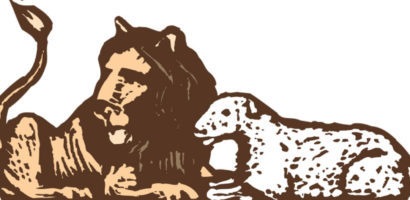Several times, I’ve been asked to post a Torah Portion (Parashat Shavua) commentary here. Today, I decided to share with you this commentary on one of my favorite Torah Portions— Parashat Shavua Chukkat (the reading for last Shabbat).
The story of the Bronze Snake is one the most graphic and expressive stories in the Torah. Even when viewed against the wonderful and vibrant background of the Word of God, this amazing story still stands out. Let’s ponder these verses together.
The beginning of the story is very traditional. By now, we are used to, even tired of, the endless rebellions of our fathers in the wilderness. Even though the Israelites are coming close to the Land and the journey is almost over, once again, like so many times before (only in this Torah Portion it happens for the second time), they spoke against God and against Moshe, and said, “Why have you brought us up out of Egypt to die in the desert? There is no bread! There is no water! And we detest this miserable food!”[1] In response, God sent poisonous snakes among the people, and many died from their bites. Then people came to Moses and said: “We sinned when we spoke against the LORD and against you. Pray that the LORD will take the snakes away from us.” So Moses prayed for the people.[2]
Pay close attention to these words: Pray that the LORD will take the snakes away from us. It was their request and their desire—quite a natural and understandable desire I would say— that the Lord would save them from the snakes. And the Lord did save them from the snakes, but His salvation came in a completely unexpected form. Wouldn’t you just expect Him to simply take away the snakes if He forgave the people and decided to save them anyway? Instead, He gives Moses an extremely strange order: “Make a fiery serpent, and set it on a pole; and it shall be that everyone who is bitten, when he looks at it, shall live. So Moses made a bronze serpent, and put it on a pole.” [3]
The Torah is like a spiritual X-ray: what is invisible on the surface level, becomes visible here. With our reasoning minds, we can wonder why. Why all these strange preparations? Why all this work on bronze, instead of just taking away the snakes? However, this story shows us, in the most graphic way possible, one of the basic principles of spiritual life. The people of Israel, after they sinned, find themselves in a new and changed reality—a reality where everybody is bitten and everybody needs to be saved. Here is the lesson: when we sin, when we choose to turn from God, our choice always has very real, inescapable consequences. It changes and distorts reality, either inside or outside of us (oftentimes both), although these changes are not always as visible as in our Torah story. Later, when the consequences of our sin inevitably begin to ‘bite us’, we then start crying out to the Lord, begging Him to save us—to take away the snakes, to take away the consequences. Yet even God Himself doesn’t simply restore things as if our sinful choices never happened; even He Himself does not simply flick away our sin and the evil that it caused.
Were we to read our text in Hebrew, we would be amazed by the abundance of the hushing, hissing sounds here: Nashach (to bite), Nechash (snake), Nechoshet (bronze)… as if indeed the hissing of the snakes filled up these verses. It’s not at all incidental that there are snakes in this story: the first sin entered the world through the snake—the serpent—and what else, if not sin—crawling, hissing and biting—is represented by these snakes in our Torah Portion? Yes, it is not enough to just take away the snakes, the venom is already at work, and therefore, God has to bring forth a remedy so that all who were bitten would live!
***
What is this remedy? We are approaching the most astonishing part of the story. In order to heal actual snake bites, you would expect an entirely practical remedy: some medicine, treatment, action. Instead, the children of Israel are simply told to look at the bronze snake— only to look, in order to live! They didn’t need to come closer, to touch it, or to do anything with it, they just had to look at it! “And so it was, if a serpent had bitten anyone, when he looked at the bronze serpent, he lived”[4]
I can imagine that some of them doubted, even grumbled: ‘What good can it do, if I just look at this serpent?’ But this is exactly the point of this story: it matters not whether His remedy meets our expectations. Do you remember Naaman, a commander of the Syrian army, who was a leper? He went to Elisha to be healed, but became furious and almost went away after Elisha didn’t meet his expectations. He said: Behold, I thought…- and almost missed his own healing, just because he thought it should be performed in a different way! How often do people miss something that God is doing, just because they think it should be done differently: Behold, I thought…
There, in the wilderness, God offered his healing to everyone. However strange and unexpected it might have seemed to them, it was the only way to survive—to be saved. Those who chose to look at the bronze serpent lived – everyone else perished. Probably, none of them understood. I suppose Moses himself was puzzled and couldn’t understand why he needed to do it, but this is exactly what faith is about: obeying the Lord, even when we don’t understand.
How did the later generations understand this image? We need to remember that there were many “Judaisms” (religious subgroups within Judaism) at the time of Jesus, each of them offering their own interpretation of the Torah. One possible interpretation of the symbolism of the Bronze Snake is found in the New Testament, in the words of Jesus himself: And as Moses lifted up the serpent in the wilderness, even so must the Son of Man be lifted up[5]. And here I have some very good news for you, my dear readers and followers: here at eTeacher, we are working on a wonderful new course – and very soon we will be able to offer you Parashot Shavua commentaries along with the New Testament interpretation. As always, you are welcome to contact me for more information (and for discount)!
[1] Num. 21:4
[2] Num. 21:7
[3] Num . 21:8,9
[4] Num.21:9
[5] John 3:14









I cannot tell you how much I have gleamed from your previous Hebrew knowledge and words! I am 81 and do not at this age have what it would take to do the course. But I also have some ” born again” Jewish friends who are trying to help me grasp the depth of the Hebrew language. I go to Africa each year to teach these deep doctrines from this knowledge. This year I was unanle to go, but I still e- mail them from the wonderful things you teach as well as my other previous Jewish brethren!! I came to Israel once with a group to Pray and Bless Israel, but I was the one who was Blessed! Oh, to be a Jew and be drawn to YESHUA must just be over the moon as they say! I am not jealous with a wordly sense, but with a deep spiritual sense!! When you who know Hebrew and have your eyes opened I just cannot imagine to see what we Gentiles have do taken for granted!! I would just love to take your course and relish all your words, but at my age I just can’t!…Love Gay Ford
What an inspiration you are, Ms. Ford. God love you & bless you @ 81, for the goodness of your blessings to so many.
Jane Mazzola
VA, USA
Thank you so much Gay for your kind and generous words. I think you still can take the course. Some of my students are in their eighties, and they manage just fine, and they enjoy the course tremendously! You can write me to my email, and I’ll tell you more about that.
Freshness in thoughts always, Julia. Great reading you.
Yes very interesting. I am just start with learning hebrew but excited about what it uncovers.thankyou for your blog.Gray
Thank you Gray, you have all the reasons to be excited: indeed, Hebrew adds such a depth to our understanding of the Scriptures and uncovers so many amazing things that are completely lost in translation. Blessings!
Looking at the bronze snake set high on a stake reminded the people of God of His promise of healing them of their poisons inflicted upon them by the serpent. It was by faith in God’s promise of salvation that saved them, just as Abraham’s faith in God justified Abraham in God’s sight, and just as we believers today have faith in the promise of salvation by the crusifiction and reserection of Jesus.
Wonderful thoughts!
Martie Erasmus
I’m busy doing the Jewish Background of the New Testament and enjoy it very much.
Love the principle of being able to look and live.. prayers for those who have yes , but cannot see, see clearly … please Lord bring your healing for vision to see YOu, Beautiful Savior. Amen .. Shalom .
This teaching touched my own behavior. You bring the the depth of understanding through Hebrew that I’m looking for! I’m looking forward to your class beginning in August! Todah Rabah! Shalom!
Great decision, Lita! i am sure you will enjoy the class! What are you taking – Biblical Hebrew or DHB?
Today I have learnt something from your article. Keep up the great work. Shalom.
Estoy interesada en este nuevo tema. Gracias